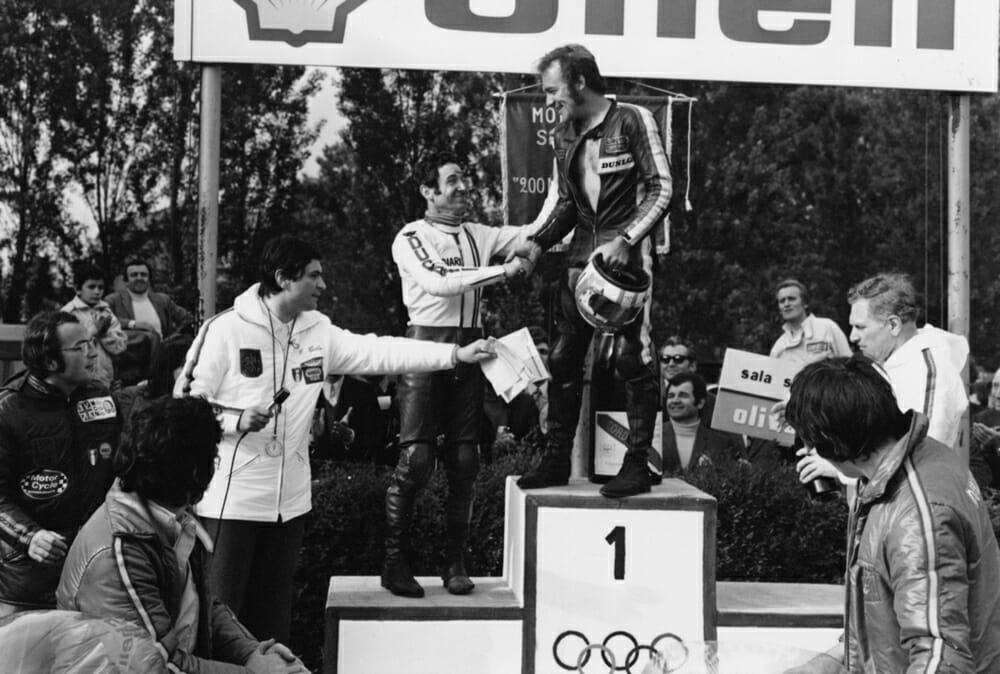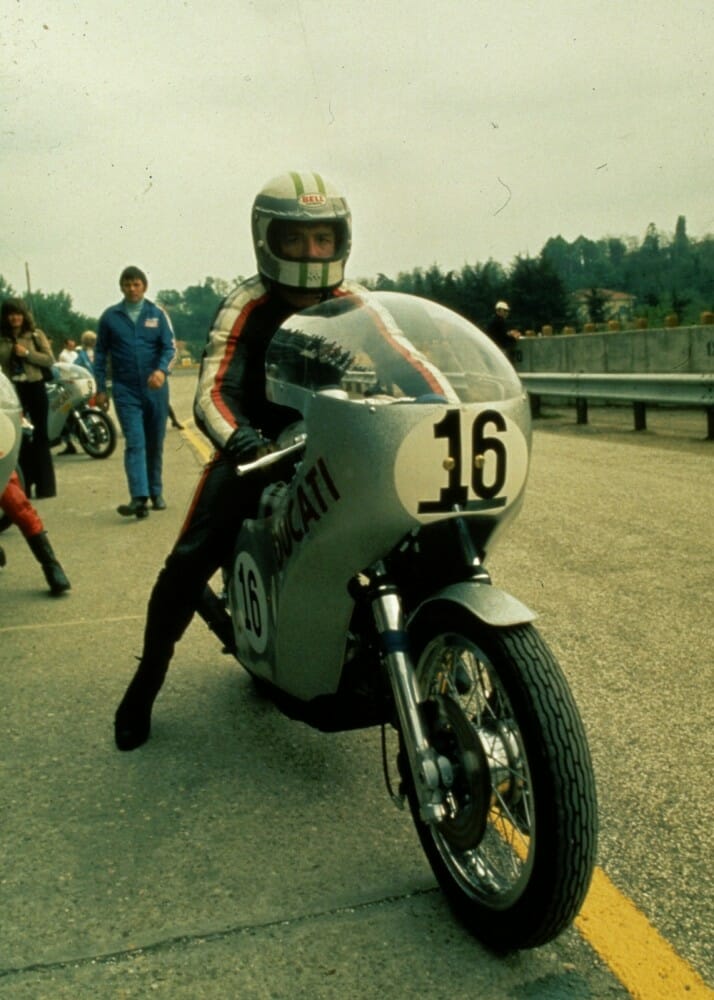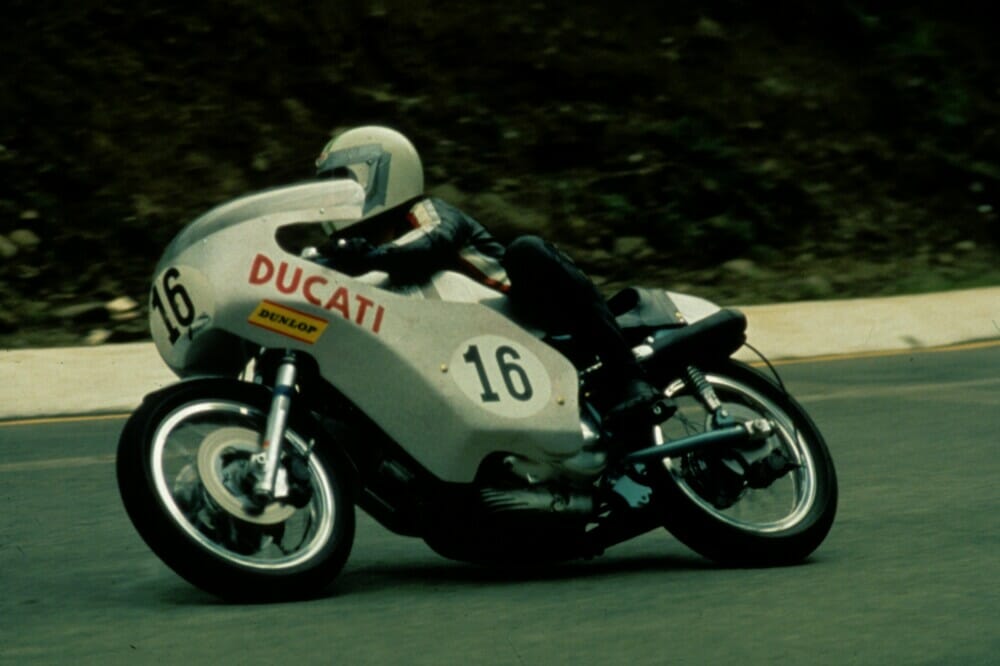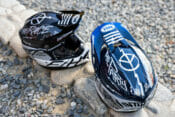Cycle News In The Paddock
COLUMN
Smart and The Days of Casual Speed
This is not an obituary for Paul Smart, nor a tribute. As a well-loved man and a well-respected racer, he earned both. But I would feel presumptuous. They would come better from somebody closer.

Better call it a personal memory.
Our worlds had meshed many times over many years, casually though regularly, and the shock with which I heard the news of his untimely death in a futile road accident on his Ducati Monster was unexpectedly profound.
For “Smartie,” at least as much as and in some ways even more than his contemporary rival and brother-in-law Barry Sheene, for me defined and personified an era of casual high-level motorcycle racing more real and certainly more personal and accessible than today’s narrow-focus highly professional pressure cooker.
Of course, they were as dedicated to winning as anyone today, although it wasn’t quite the highly profitable career path it can be now. And there was also a random element, to the men and to the motorcycles.
I first met him in 1971, both of them, when he came to South Africa with Sheene and a couple of others for the annual internationals. He was newly married to the elfin Maggie, Barry’s older sister (they had wed in secret a few days before, and when the series organizers heard the news they insisted on flying Maggie out to join the party). I was just starting out as a reporter covering motorsport. The casual humor of the touring racers as they made the most of the sunshine and hospitality belied their speed on track. Racing was a sort of deadly serious joke.
Don’t ask me the results. I’ve lost that notebook. But they were exciting times, with some significance. Paul and Barry shared the first water-cooled Yamaha production-racing twins on that trip—bikes that would come to define the 250cc and 350cc championships.

Smart, along with several British riders, had a cross to bear in the coming years: His brother-in-law. In the same way that Valentino Rossi’s shadow would feel overbearing to a generation of Italian riders (ask Marco Melandri, Max Biaggi, Andrea Dovizioso…) Sheene had the knack of stealing the sunlight from his rivals. And the best contracts.
Smart managed to shine nonetheless, racing at home and in the USA. Short circuits, Daytona, Isle of Man—the task of a professional racer in those days was wide-angle. You had to do it all.
The list of motorcycles that he rode spans the continents as well as an era when the old-world marques were under attack from Japan. Smart raced and won on Nortons and Yamahas, BSAs and Kawasakis, Triumphs and Suzukis. He did so all over the world.

With Barry and Cliff Carr, he tested the first prototype of Suzuki’s RG500 square-four—an overpowered wobbler with a spindly frame that didn’t even have a full loop. Scary and exciting.
He also raced it in GPs and elsewhere in its faltering maiden years. His bike always seized, he told me; Sheene’s never did. Suzuki blamed his riding style, until one day the pair swapped bikes. This time Sheene seized, Paul didn’t. “He did me a favor that day.”
GP success eluded him; he did better racing 750s in the U.S., in the new class which was significant in bringing European and American racers together. He was successful on both Kawasaki’s and Suzuki’s hair-raising triples. Looking for ways to cope with wayward handling, Smart pioneered the knee-out riding style, shifting his weight inboard to reduce the lean angle. It looked crazy at first, but soon everyone was doing it.
Smart is best known for a pivotal role in establishing Ducati as a pre-eminent sporting manufacturer. The Bologna firm had developed its unique 90-degree desmodromic twin in 1970, first as a 500-class racer. In 1972 the engine was enlarged to 750cc, in time for the inaugural Imola 200, Europe’s first major race for the new F750 class.
Smart raced and won on Nortons and Yamahas, BSAs and Kawasakis, Triumphs and Suzukis. He did so all over the world.
It was a classic debut. Smart, still jet-lagged after flying in straight from a race in the USA, took the bike to victory, with teammate Bruno Spaggiari second. With its distinctive glass-fiber fuel tank with a transparent sighting strip down the side, the bike became iconic, and the basis for every Ducati V-twin ever since.
I recall Paul telling me years ago how on first acquaintance the bike felt so slow he tried to blow it up. And failed. It was bulletproof. Or am I imagining it? I’ve lost that notebook, too.
I wrote two biographies of Sheene. Paul and Maggie were hugely helpful for both. In his shadow again, but always generous and humorous with it.
It’s been a cruel year for bike racing but losing a past master on the road somehow compounds it. And closes a happy chapter of racing for fun as well as to win. Sincere condolences. CN
Click here to read the In The Paddock Column in the Cycle News Digital Edition Magazine.
Click here for all the latest motorcycle Industry News on Cycle News.
